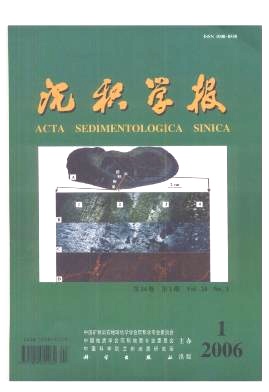Geochemistry in Different Shell Layers of Rudist Bivalvefrom Late Cretaceous in the South of Tibet andPreservation for the Information of Sea Water
- Received Date: 1900-01-01
- Rev Recd Date: 1900-01-01
- Publish Date: 2006-02-10
-
Key words:
- Late Cretaceous in southern Tibet /
- rudist bivalves /
- carbon /
- oxygen and strontium isotopes /
- concentrations of Mn and Sr /
- diagenetic alteration /
- /
Abstract: The concentrations of Mn, Sr, SiO2, Al2O3, and values of δ13C, δ18O and 87Sr/86Sr have been measured for different shell layers of rudist bivalve from a Late Cretaceous section in the south of Tibet. The study results are as follows:
1) The constitution minerals, in the pillar, pearl and transition layers for the shell of rudist bivalve have totally transposed to diagenetic low magnesium calcite (DLMC) by neomorphism and all the original carbonates are recrystallized to a certain extent.
2) The recrystallization of inner shell layers (pearl or transition layer) is much stronger than that of outer shell layer. The outer shell layer, with duller catholuminescence, has pillar texture.
3) The concentration of Sr and value of δ18O displays a regular variety from the outer shell layer (pillar layer) to inner shell layer (pearl layer). The concentration of Sr and value of δ18O for outer shell layer are lower than those of inner shell layer, suggesting that the inner shell layer lost more information of sea water during neomorphism.
4) The δ18O values of all the shell layers and the celom filling are much lower than those of original sea water reported by the published papers, so the exchange with meteoric water (or other diagenetic fluid) in oxygen isotope should have happened during neomorphism of precursory minerals in the shell, but relatively less exchange happened in outer shell layer.
5) The carbon and strontium isotope composition of different shell layers is close to the values of coeval sea water, and no regular variation among different shell layers, indicating less exchange with diagenetic fluid in carbon and strontium isotope. The reason is that diagenetic recrystallization of carbonates is accomplished in a system with a low water / rock ratio for carbon (also for strontium), but a high ratio for oxygen, and therefore the isotope compositions of carbon and strontium contains more information for original sea water.
| Citation: | HUANG Sijing. Geochemistry in Different Shell Layers of Rudist Bivalvefrom Late Cretaceous in the South of Tibet andPreservation for the Information of Sea Water[J]. Acta Sedimentologica Sinica, 2006, 24(1): 68-74. |






 DownLoad:
DownLoad: